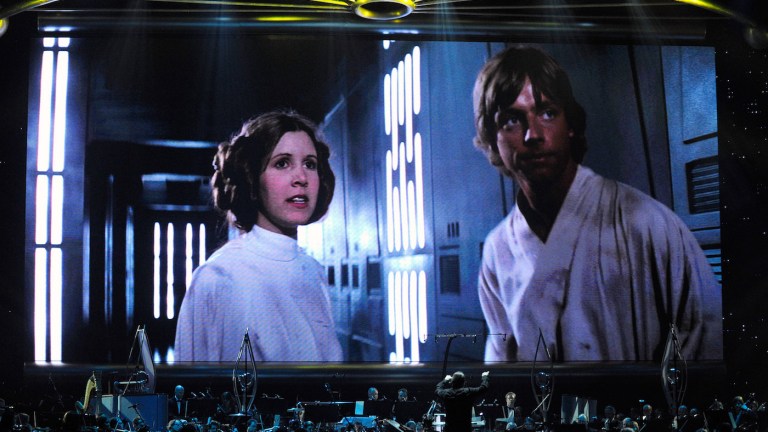Cinema is More Than Just a Big Screen
Reports of moviegoing and theaters' demise have been greatly exaggerated.

The first movie I recall seeing in theaters is Home Alone 2: Lost in New York. Not that Christopher Columbus’ sequel about pratfalls and questionable parenting was my maiden voyage to a multiplex. There were Ninja Turtles and Disney animations before that. Apparently. But within the halcyon days of a five-year-old’s memory, the inaugural trip to the cinema at night is an event of singular importance.
Just as easily as Kevin McCallister’s Manhattan weekend, I can still see the actual theater, smell the aroma of popcorn, and sense the significance in a ritual common to modern childhood: going to the sequel of a family favorite. There was a cardboard cutout for a new Disney movie called Aladdin right here, towering at more than twice my height and a poster for something enigmatic and unnerving over there: Dracula spelled out in blood-splattered red lettering. At the time, I didn’t know who Robin Williams was, much less the difference between a Dracula and a Frankenstein, but it all burrowed into the subconscious as deeply as John Williams’ Christmastime hymn, “Somewhere in My Memory.”
By contrast, I last watched Home Alone 2 on television a few months ago, with one eye on the smartphone in my hand and the other taking only passing notice of the TV—perplexed at why a cable network still edited out the World Trade Center but left in the malevolent presence of a New York real estate grifter. I turned it off halfway through.
This is admittedly an imperfect comparison. The distance between watching a film as a child and as an adult, or a new movie versus one you enjoyed (or endured) throughout a lifetime, is as wide as the Hudson. And yet, the nagging truth of their juxtaposition is no easier to escape than a Culkin kid with a box of matches. Some things just play better in a theater. All things, in fact.
We may change, but the experience of going into a darkened room with strangers and sharing an ephemeral dream has not. When their presentations are protected, theaters remain a rare space where we can be on the same page at the same time, be it via escapist fantasy or through soulful catharsis. And in an increasingly commodified and isolated world of content curated by invisible algorithms, that democratic ability to participate equally in what Roger Ebert once called “the empathy machine” of a flickering light—one that can put you in someone else’s shoes, uninterrupted, for a couple of hours—is more valuable than ever.
It’s why the current theatrical crisis caused by the COVID-19 pandemic should be treated as an existential threat to the industry, but not an insurmountable one. To be sure, the chorus of doom and gloom in the media has intensified for nearly a year – particularly in recent months, following Warner Brothers’ announcement that it would put its whole 2021 film slate on HBO Max. And much of that spilled ink has been over the fact that the theatrical window which exists between theaters and home media is shattered.
Indeed it is, but there’s little reason to doubt it can or will be rebuilt in some fashion. WarnerMedia hastened its streaming pivot in large part because of HBO Max’s shaky rollout, which after half a year failed to see even a third of the HBO subscribers, who automatically were enrolled to the streamer, bothering to activate their accounts. So in terms of building HBO Max’s base, it was a shrewd decision to now put major WB releases on the service. And according to market research firm Apptopia, WB’s most high profile HBO Max launch, Wonder Woman 1984, generated 544,000 mobile device subscriptions alone in its opening weekend.
But in purely economic terms, if Apptopia’s numbers are to be believed WW84 may have netted just $8.1 million on mobile at launch – less than eight percent of the first Wonder Woman’s domestic debut. For this reason, competitors with healthier streaming services like Disney+ (or those with no major streamer at all) currently aren’t following WB’s fire sale approach. Disney intends to launch all its Marvel movies in theaters this year, and Universal is keeping the next Fast and Furious film headed on a one-way street toward cinemas.
All of this is encouraging for theaters’ future, but it would nonetheless be unfortunate if they return as exclusively the playground of blockbusters. It’s possible. In a recent Q&A, former Batman star Ben Affleck regretted the rising influence of intellectual property and dreaded that “even after COVID, when theaters reopen, there will definitely be fewer [dramas] released theatrically.”
I hope not. The cinematic experience remains distinct from sitting at home with its myriad distractions. The last year taught us that just as much as it did the comfort of on-demand streaming. When the last vestiges of this crisis eventually recede, folks will again have a safe choice to make about how they come to movies—and whether the elusive spell they cast is still more enchanting than the content autoplaying on a smartphone.
